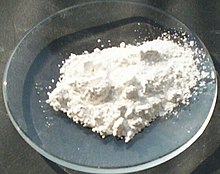Properties and Characteristics of Calcium Hydroxide
- Calcium hydroxide is poorly soluble in water.
- Solubility increases with decreasing temperature.
- The solubility product of calcium hydroxide is 5.02×10.
- It reacts with hydrogen chloride to form calcium chloride.
- The acidity of calcium hydroxide is p.
- Calcium hydroxide has a polymeric structure similar to that of Mg(OH).
- It is produced commercially by treating lime with water.
- It can also be prepared by mixing calcium chloride and sodium hydroxide.
- Calcium hydroxide occurs naturally as the mineral portlandite.
- The retrograde solubility of calcium hydroxide was first observed in the 19th century.
- The dissolution of calcium hydroxide in water involves an entropy decrease.
- Retrograde solubility is a counter-intuitive temperature dependence.
- Variably hydrated phases of calcium sulfate also exhibit retrograde solubility.
- The dissolution of calcium hydroxide in water is exothermic.
Uses of Calcium Hydroxide
- It is used in the preparation of lime mortar.
- Calcium hydroxide acts as a flocculant in water and sewage treatment.
- It raises pH in fresh-water treatment to prevent corrosion.
- It is used in the production of ammonia gas.
- Calcium hydroxide is an intermediate in the production of sodium hydroxide in the paper industry.
- It is used in the construction industry for mortar and plaster.
- It is used in the production of paper and pulp.
- It is used as a pH regulator in water and wastewater treatment.
- It is used in the production of chemicals, such as calcium stearate.
- Calcium hydroxide is used in agriculture as a soil amendment.
Safety and Health Considerations
- Unprotected exposure to calcium hydroxide can cause severe skin irritation.
- It can cause chemical burns and lung damage.
- Prolonged exposure to calcium hydroxide dust can cause lung damage.
- It may lead to blindness and rashes.
- Calcium hydroxide is a strong base with potential health hazards.
- Caution should be exercised when handling calcium hydroxide.
- It can cause skin and eye irritation.
- It is harmful if swallowed or inhaled.
- Protective measures, such as gloves and goggles, should be used when handling calcium hydroxide.
- Proper ventilation is important to prevent the buildup of calcium hydroxide dust.
Solubility and Dissociation of Calcium Hydroxide
- Calcium hydroxide has low solubility in water.
- It dissociates into calcium ions (Ca2+) and hydroxide ions (OH-) in water.
- The solubility of calcium hydroxide increases with temperature.
- The dissociation of calcium hydroxide is an exothermic process.
- The dissociation constant of calcium hydroxide is known as pKb.
- The solubility of calcium hydroxide in water affects its environmental impact.
Environmental Impact and Regulations
- Calcium hydroxide is considered a basic substance.
- It is approved for use as a plant protection product in the European Union.
- Calcium hydroxide is not classified as a hazardous substance by the NIOSH Pocket Guide.
- Regulations exist regarding the use and disposal of calcium hydroxide in various industries.
Calcium hydroxide (traditionally called slaked lime) is an inorganic compound with the chemical formula Ca(OH)2. It is a colorless crystal or white powder and is produced when quicklime (calcium oxide) is mixed with water. It has many names including hydrated lime, caustic lime, builders' lime, slaked lime, cal, and pickling lime. Calcium hydroxide is used in many applications, including food preparation, where it has been identified as E number E526. Limewater, also called milk of lime, is the common name for a saturated solution of calcium hydroxide.
 | |
 | |
| Names | |
|---|---|
| IUPAC name Calcium hydroxide | |
Other names
| |
| Identifiers | |
3D model (JSmol) | |
| ChEBI | |
| ChemSpider | |
| ECHA InfoCard | 100.013.762 |
| EC Number |
|
| E number | E526 (acidity regulators, ...) |
| 846915 | |
| KEGG | |
PubChem CID | |
| RTECS number |
|
| UNII | |
CompTox Dashboard (EPA) | |
| |
| |
| Properties | |
| Ca(OH)2 | |
| Molar mass | 74.093 g/mol |
| Appearance | White powder |
| Odor | Odorless |
| Density | 2.211 g/cm3, solid |
| Melting point | 580 °C (1,076 °F; 853 K) (loses water, decomposes) |
| |
Solubility product (Ksp) | 5.02×10−6 |
| Solubility |
|
| Acidity (pKa) | 12.63 (first OH−), 11.57 (second OH−) [clarification needed] |
| −22.0·10−6 cm3/mol | |
Refractive index (nD) | 1.574 |
| Structure | |
| Hexagonal, hP3 | |
| P3m1 No. 164 | |
a = 0.35853 nm, c = 0.4895 nm | |
| Thermochemistry | |
Std molar entropy (S⦵298) | 83 J·mol−1·K−1 |
Std enthalpy of formation (ΔfH⦵298) | −987 kJ·mol−1 |
| Hazards | |
| GHS labelling: | |
  | |
| Danger | |
| H314, H335, H402 | |
| P261, P280, P305+P351+P338 | |
| NFPA 704 (fire diamond) | |
| Flash point | Non-flammable |
| Lethal dose or concentration (LD, LC): | |
LD50 (median dose) | 7340 mg/kg (oral, rat) 7300 mg/kg (mouse) |
| NIOSH (US health exposure limits): | |
PEL (Permissible) | TWA 15 mg/m3 (total) 5 mg/m3 (resp.) |
REL (Recommended) | TWA 5 mg/m3 |
IDLH (Immediate danger) | N.D. |
| Safety data sheet (SDS) | |
| Related compounds | |
Other cations | Magnesium hydroxide Strontium hydroxide Barium hydroxide |
Related bases | Calcium oxide |
| Supplementary data page | |
| Calcium hydroxide (data page) | |
Except where otherwise noted, data are given for materials in their standard state (at 25 °C [77 °F], 100 kPa). | |
calcium hydroxide (uncountable)